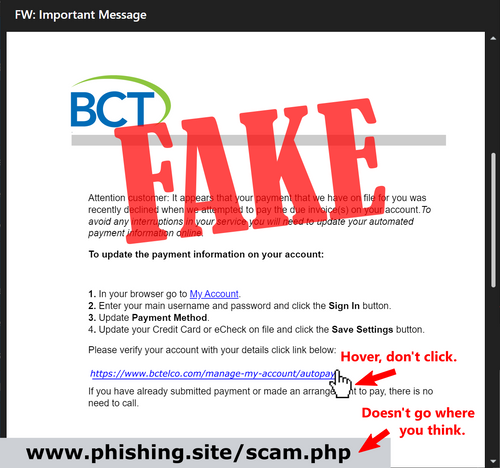The digital age has ushered in unparalleled convenience and connectivity. However, with these benefits come new challenges, one of which is the prevalence of online fake email verification scams. As an expert in cybersecurity, I'll take you on a journey to understand the ins and outs of online fake email verification, how to spot phishing scams, and how to safeguard your digital identity.
The Menace of Online Fake Email Verification
Online fake email verification is a devious tactic employed by cybercriminals to deceive individuals into disclosing personal information, login credentials, or financial details. These scams often take the form of seemingly legitimate emails that prompt you to verify your account or take urgent action. Here's why you should be concerned:
Identity Theft: Cybercriminals use the information they obtain to steal your identity.
Financial Loss: Phishing scams can lead to financial loss if you provide credit card or banking details.
Privacy Invasion: Personal information may be sold or misused for nefarious purposes.
Data Breaches: Falling victim to phishing can lead to data breaches affecting your online accounts.
Recognizing Online Fake Email Verification Scams
Recognizing online fake email verification scams is crucial to protecting yourself. Here are some telltale signs to watch out for:
Urgent Language: Scam emails often create a sense of urgency, pressuring you to act quickly.
Generic Greetings: Legitimate organizations usually address you by name, while scammers often use generic greetings.
Suspicious Links: Hover over links to reveal their true destination before clicking. Be cautious of misspelled URLs.
Mismatched Email Addresses: Check that the sender's email matches the official domain of the organization.
Grammar and Spelling Errors: Scam emails often contain grammatical and spelling mistakes.
Protecting Yourself from Phishing Scams
Now that you know how to identify phishing scams, let's explore how to protect yourself:
1. Verify Email Sources:
Always double-check the sender's email address and verify its authenticity.
2. Be Cautious with Links:
Hover over links to see where they lead before clicking. Don't click on suspicious links.
3. Use Two-Factor Authentication (2FA):
Enable 2FA wherever possible to add an extra layer of security to your accounts.
4. Keep Software Updated:
Regularly update your operating system, antivirus, and web browsers to patch vulnerabilities.
5. Educate Yourself:
Stay informed about the latest phishing techniques and scams.
Reporting Phishing Scams
If you encounter a phishing attempt, report it immediately. Here's how:
Forward the Email: Forward the suspicious email to the Anti-Phishing Working Group at [email protected].
Contact the Organization: If the email appears to be from a legitimate organization, contact them directly through official channels to verify the email's authenticity.
Use Government Resources: Report phishing scams to government agencies like the IRS and FTC.
Frequently Asked Questions (FAQs)
Q1: How can I tell if an email is a phishing attempt or genuine?
Look for signs like urgency, generic greetings, and suspicious links. Verify the sender's email and use caution with unsolicited emails.
Q2: Can phishing scams be sophisticated and hard to detect?
Yes, some phishing scams can be highly sophisticated and challenging to spot. Always exercise caution.
Q3: What should I do if I've fallen victim to a phishing scam?
Change your passwords immediately, report the incident to the relevant authorities, and monitor your accounts for suspicious activity.
Q4: Are there tools to help identify phishing emails?
Yes, many email providers have built-in spam and phishing filters. Additionally, you can use email verification tools and browser extensions.
Q5: How can I educate my employees or family members about phishing?
Conduct cybersecurity awareness training and share resources from reputable sources to educate others about the dangers of phishing.
Conclusion
Online fake email verification scams are a real threat in today's digital landscape. By understanding the tactics employed by cybercriminals, recognizing the signs of phishing attempts, and taking proactive steps to protect your digital identity, you can navigate the online world with confidence. Remember, vigilance is your best defense against phishing scams, and reporting suspicious emails can help authorities combat cybercrime and protect others from falling victim to these schemes. Stay safe, stay informed, and stay one step ahead of the scammers.



